Reviews
Nicholas Meyer
USA, 1979
Credits
Review by Jenny Jediny
Posted on 20 August 2010
Source Warner Home Video VHS
Categories Favorites: Time Travel
If you live in any major city - New York, London, Chicago, Berlin, etc. - ask yourself, would you recognize a visitor from the past? A well-spoken, if oddly dressed gentleman on the subway loudly claiming to be Jules Verne would be just as urgently sidestepped as a disheveled homeless man panhandling on a street corner, and yet the notion of men and women from years past infiltrating the present remains a romantic and popular one in cinema. There have been nineteenth-century dukes who fall through portals into modern day Manhattan (Kate and Leopold), medieval knights adrift in 1990s France (Les Visiteurs) and of course, the impressive entourage Bil and Ted manage to wrangle, everyone from Socrates to Joan of Arc, for their history report.
Nicholas Meyer’s Time After Time is at its most charming exploring this well-worn path with one of literature’s most famous figures associated with time travel, author, and sci-fi father H.G. Wells. Over an evening of cigars and brandy, Wells reveals to colleagues his latest invention, the one and only time machine of his most famous novel. Unfortunately - and bear with me, as this may sound like a Hollywood plot being loudly cranked out - one of H.G.’s associates, John Leslie Stevenson, is simultaneously revealed to be none other than Jack the Ripper, and he slyly evades Scotland Yard via Wells’ path to the future. Luckily, Wells’ insight led him to install a reverse mechanism within the machine that quickly forces it back to 1893, revealing Stevenson’s whereabouts somewhere in 1979. Feeling the weight of responsibility for releasing a serial killer into the future, H.G. sets out to find him.
What Wells expects of the future, a social utopia, is a far cry from the streets of late 70s San Francisco that he tumbles into. While airplanes and television are easily accepted by Wells modern technologies, commonplace social apathy offends the writer, and the evening news shocks him with regular reports of urban violence. What H.G. finds horrifying delights Stevenson, who feels a mere “amateur” among present day criminals, rather than a homicidal freak of Victorian London. H.G.’s connection to the present comes in a far more pleasing form, as he catches the eyes of Amy Brown, flirtatious employee of the San Francisco branch of the Bank of England. While H.G.’s tweed, pocket watch and stiff reserve might scream Sherlock Holmes fanatic to any other woman, Amy is immediately smitten (his accent doesn’t hurt of course).
H.G. (or “Herbert,” as his new girlfriend fondly calls him) and Amy have the expected awkwardness of a buttoned up Victorian romancing a unabashed late 70s feminist, but they also have palpable chemistry, perhaps partially due to Mary Steenburgen and Malcolm McDowell’s offscreen romance (which led to a decade-long marriage). While Steenburgen is a lovely presence, McDowell is perhaps more memorable for removing all traces of cruelty from his icy blue eyes and shedding the persona earned for earlier, more notorious roles as A Clockwork Orange’s Alex and Caligula. Here he’s nothing but a sweet, if bumbling gentleman bent on restoring order to both his world and this one.
Ultimately, the time travel in Time After Time is more of a catalyst for romance than any kind of Wellsian inspired science fiction. Time crossed lovers though, are hardly an uncommon side effect of time travel, and Time After Time’s fanciful blend of historical fact with fiction manages to excuse its almost too easy last act, complete with winking epilogue. But then again, this is practically a prescription date movie for nerds and Victorian fetishists, and in that respect, Time After Time remains a clever, funny success.
More Favorites: Time Travel
-

Bill and Ted’s Excellent Adventure
1989 -
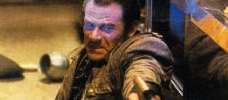
Trancers
1985 -

The Time Machine
1960 -

Groundhog Day
1993 -

Warlock
1989 -

The Navigator
1988 -
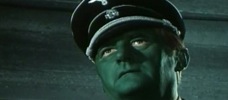
Tomorrow I’ll Wake Up and Scald Myself with Tea
1977 -

The Spirit of ‘76
1990 -

Flight of the Navigator
1986 -

La jetée
1962 -

Twelve Monkeys
1995 -

Beastmaster 2: Through the Portal of Time
1991 -

Peggy Sue Got Married
1986 -
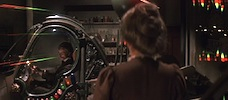
Time After Time
1979 -

Somewhere in Time
1980 -

Back to the Future
1985 -

Back to the Future Part II
1989 -

Back to the Future Part III
1990 -
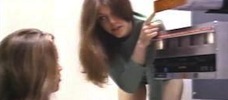
Idaho Transfer
1973 -
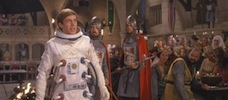
Unidentified Flying Oddball
1979 -

Slaughterhouse-Five
1972 -

The Lake House
2006 -

Time Bandits
1981 -

Doctor Who
1963–present -

Doctor Who
1963–present
We don’t do comments anymore, but you may contact us here or find us on Twitter or Facebook.



